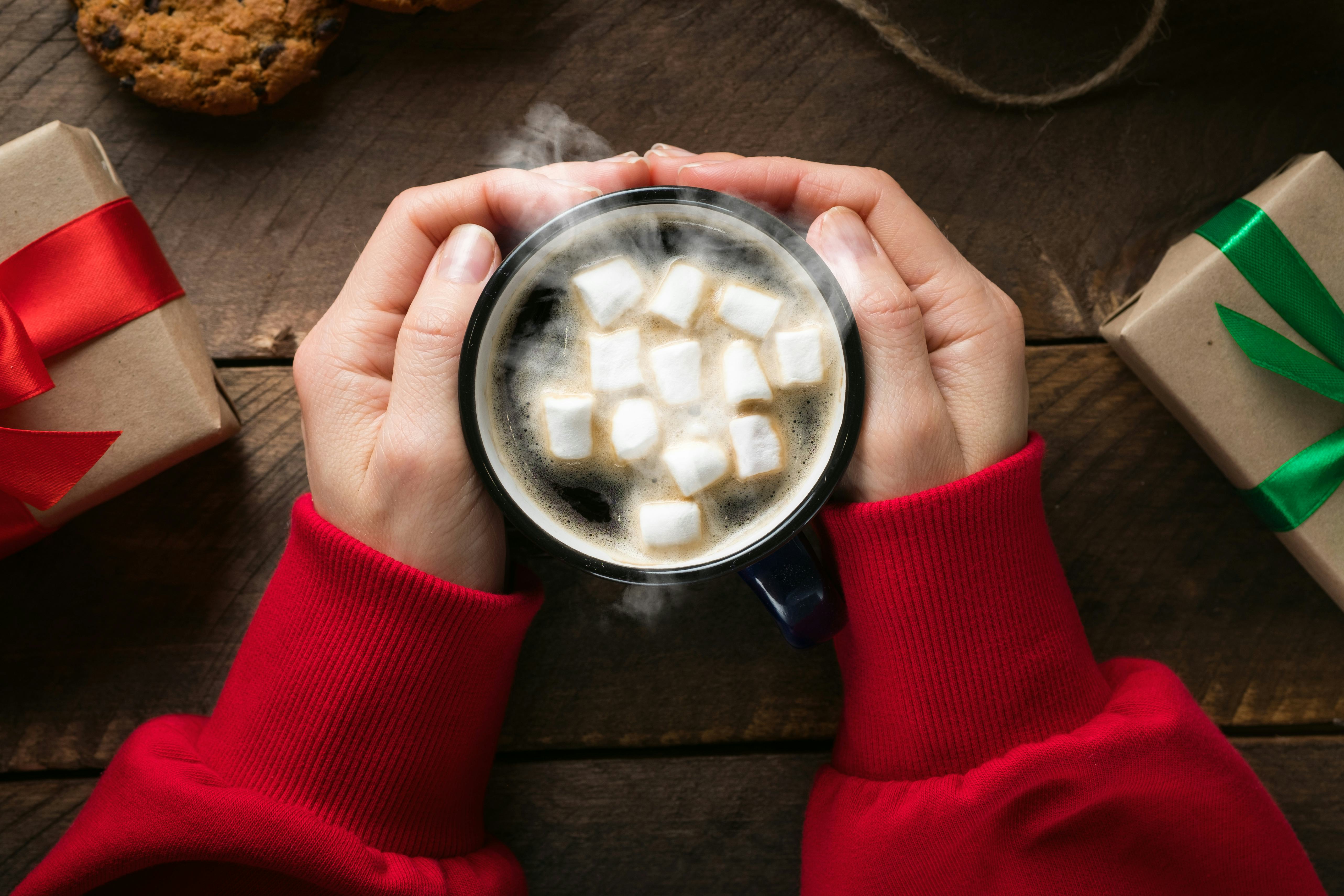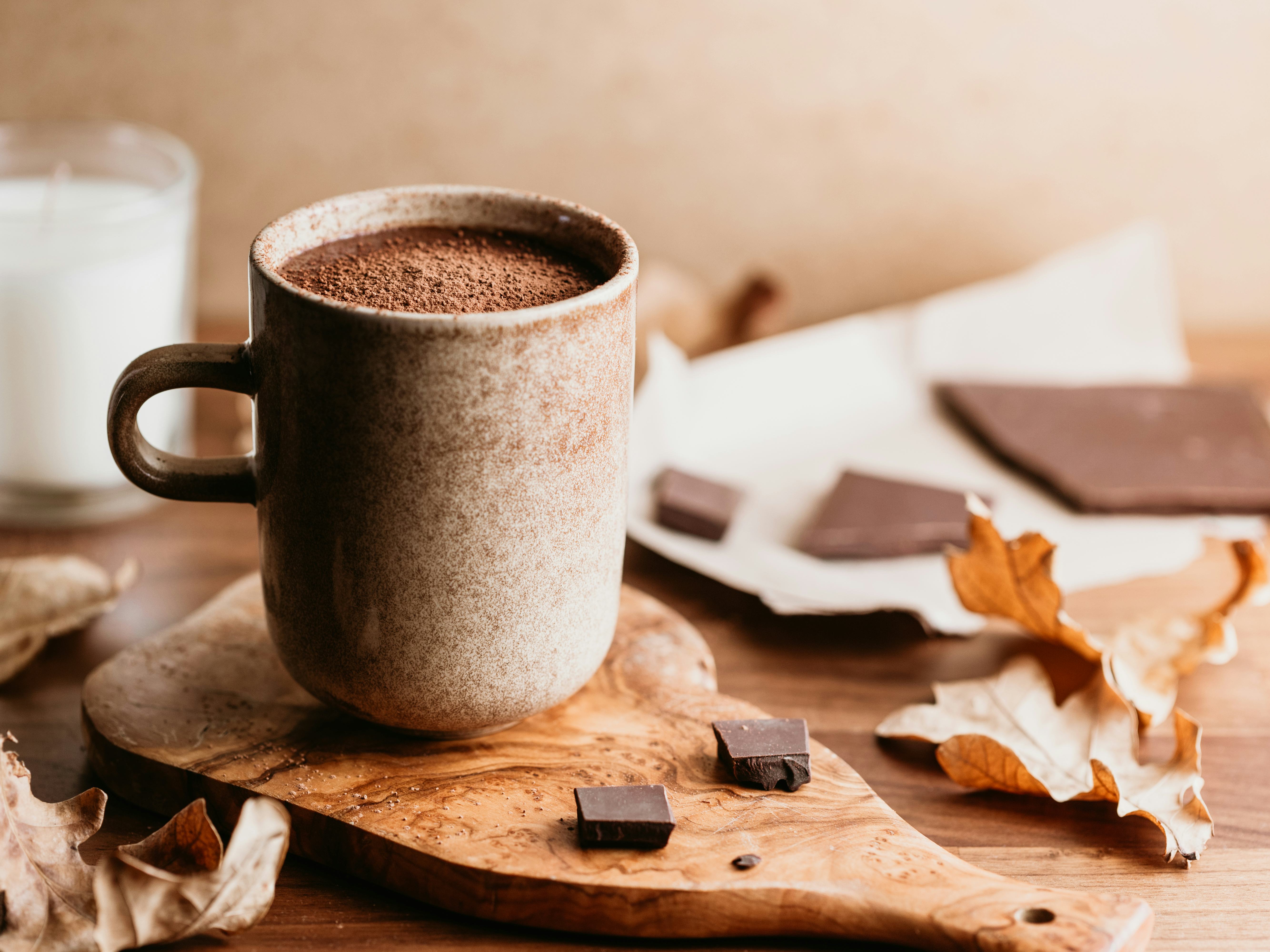
There’s hot cocoa, and then there’s hot chocolate. These terms are used interchangeably, but arguably there’s a difference. Hot cocoa is more like steaming-hot chocolate milk, made from one’s favorite instant pack or a mix of cocoa powder and sugar with milk or water.
Hot chocolate is a far richer concoction, akin to warm brownie batter, and so thick it coats the back of a spoon.
Both hot drinks are divine, but there’s at least one less intuitive ingredient that contributes to the decadence of hot chocolate. If you search for European- or Italian-style hot chocolate recipes, the secret ingredient that nearly always comes up is... cornstarch.

What is cornstarch?
This white powder is the starch from corn (duh) during the refining process. Cornstarch comes from the kernel’s endosperm, which is the young plant’s main energy reserve, according to Norman Wagner, a chemical engineer at the University of Delaware. Its chemical formula is C6H10O5. A molecule comprised of carbon with some ratio of H2O is a carbohydrate, so the endosperm is full of carbs and energy for the kernel to grow from. Wagner likens starches in plants to fat in humans: both are stored energy.
Amylose and amylopectin are starch’s two main chemical components. Both are polysaccharides, meaning they’re complex sugars that consist of several sugar molecules rather than a chain of single sugars (monosaccharides). These complex sugars are long chains of molecules, Wagner tells Inverse, but are wrapped tightly like balls of yarn.
What does cornstarch do to hot chocolate?
It’s easiest to see cornstarch work its magic when you make what some call oobleck, a simple goop of cornstarch and room-temperature water. This combo makes a suspension, meaning the cornstarch molecules don’t dissolve and instead float through the liquid. So, it’s part-solid and part-liquid. When you knead this mixture vigorously, water molecules get trapped in the polysaccharide chains, creating a squishy yet solid substance as the molecules seize up and cling together. Kneading it slowly keeps it in this strange, fluid-like state.
In fact, oobleck is a type of non-Newtonian fluid. Whereas water is a classic Newtonian fluid that maintains constant viscosity no matter how vigorously it’s stirred, non-Newtonian fluids’ properties change depending on the amount of force applied. Ketchup is an everyday non-Newtonian fluid that can move out of a bottle when shaken or squeezed, but doesn’t completely soak our French fries.
There are several types of non-Newtonian fluids:
- Thixotropic: Applied force over time decreases viscosity (e.g., honey)
- Rheopectic: Applied force over time increases viscosity (e.g., heavy cream)
- Shear thinning: The stronger the applied force, the less viscous the substance (e.g., tomato sauce)
- Dilatent or shear thickening: The stronger the applied force, the more viscous the substance (e.g., oobleck)
While cornstarch in hot chocolate doesn’t create chocolatey oobleck, it does create another type of non-Newtonian fluid.
It all comes down to temperature, Wagner says. Cornstarch, which inside the corn endosperm is a tight tangle of molecular chains, doesn’t unfurl in cold water. “If you put the starch in cold water, the water can't get inside, it stays like a granule, and then you get the oobleck,” Wagner tells Inverse.
Hot water, on the other hand, unravels the carbohydrate chains. “If you put the starch in hot water, the water gets in and then the starch swells up,” Wagner says. The cornstarch partially dissolves, and the swelling carbs make a “soft, gooey mess.” The result is a thixotropic non-Newtonian fluid that becomes less viscous the more it’s stirred, but holds a pleasantly thick mouthfeel when sipped. The same concept applies if you add cornstarch to hot milk or similar liquids like almond or soy milk.
What’s a good way to use it?
It’s possible to make your own instant mix to keep at home by mixing sugar (either refined or confectioner’s), cornstarch, and cocoa as a shelf-stable combo. Salt and vanilla are also good additions to the homemade powder. Too much cornstarch can make the drink into a sticky batter. Some recipes recommend about one teaspoon of starch to one cup of milk for optimal thickness, but we haven’t tested them out.
Sufficient cornstarch also keeps the mixture cohesive. At the bottom of a mug, there’s usually a layer of undissolved sugar and cocoa powder that settled. “That starch can provide a thickening of the liquid to make the viscosity very high, so those little particles don't settle to the bottom so quickly,” Wagner says.
Melting some of your favorite chocolate into this drink makes for an even more sumptuous treat.
CHECK, PLEASE is an Inverse series that uses biology, chemistry, and physics to debunk the biggest food myths and assumptions.
Now read this: What is artificial banana flavor made of? A food neuroscientist reveals the truth







